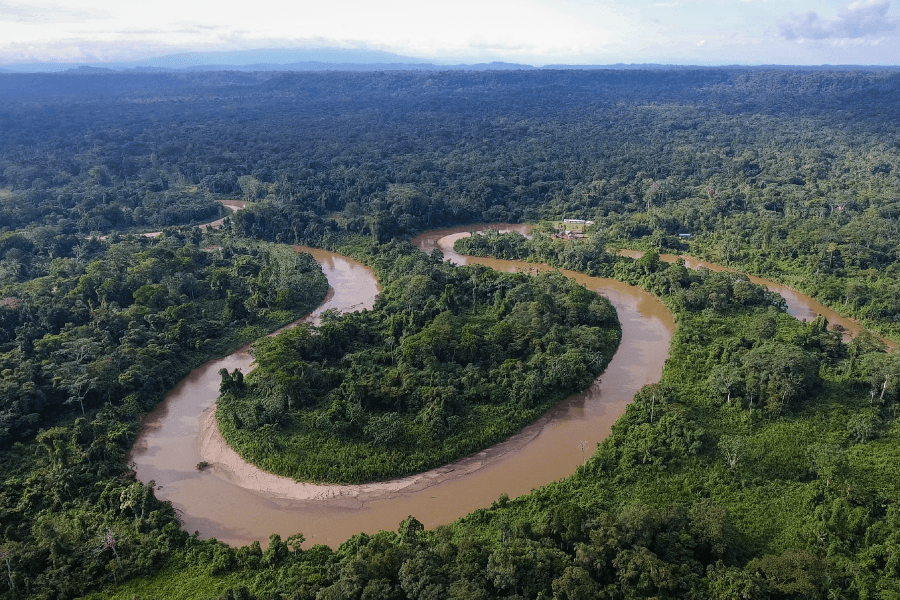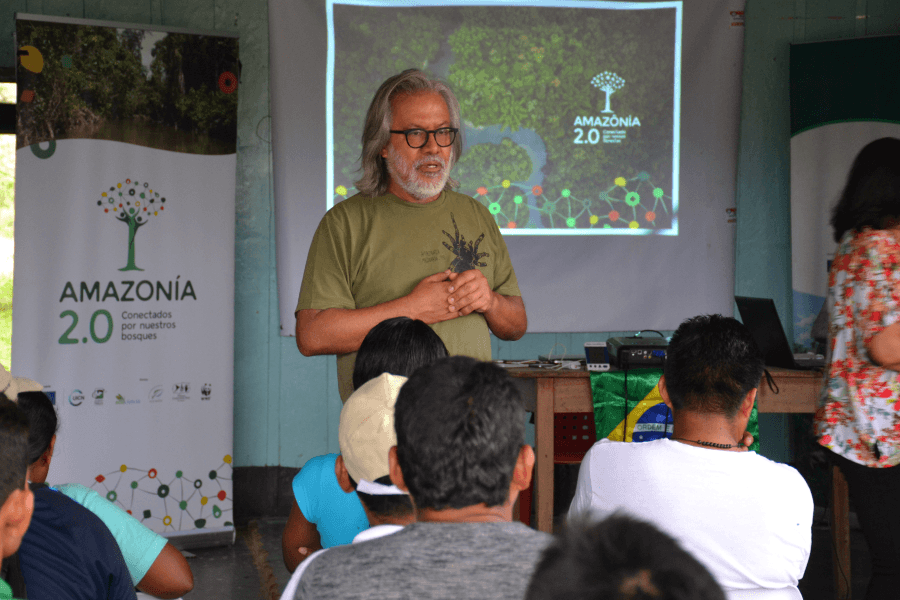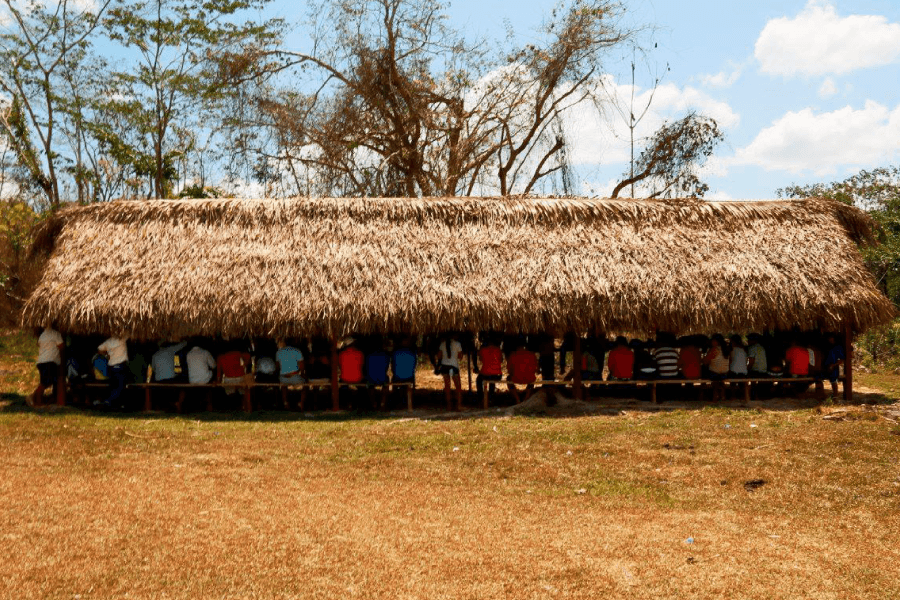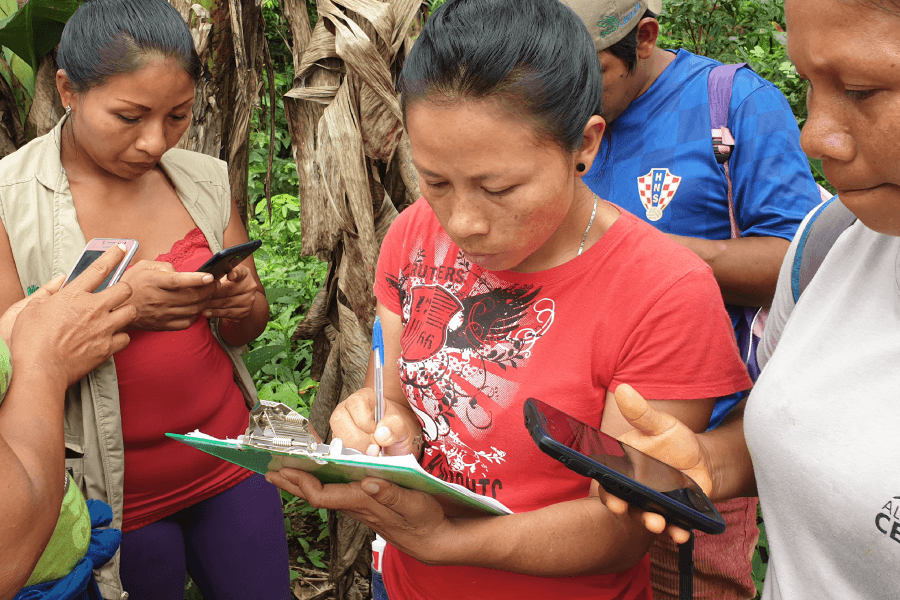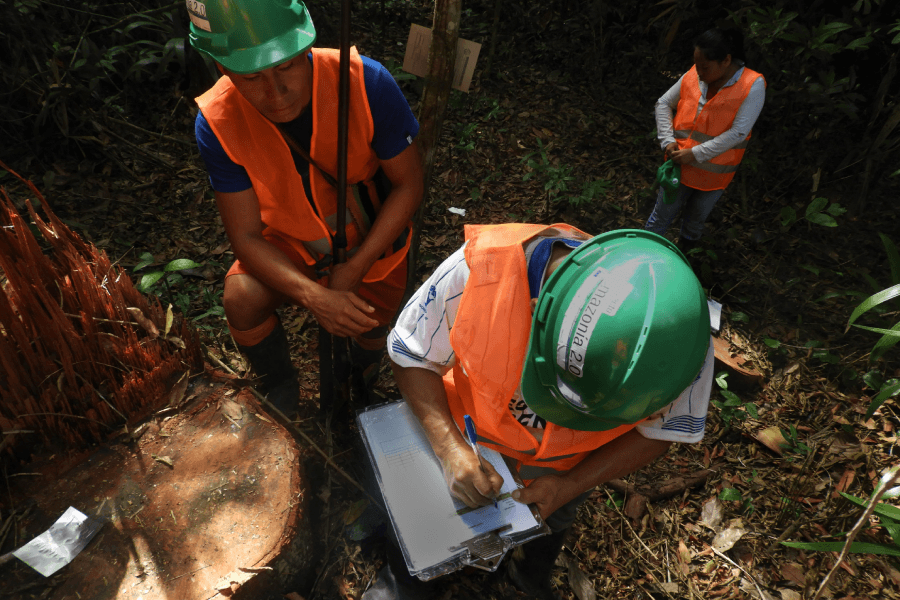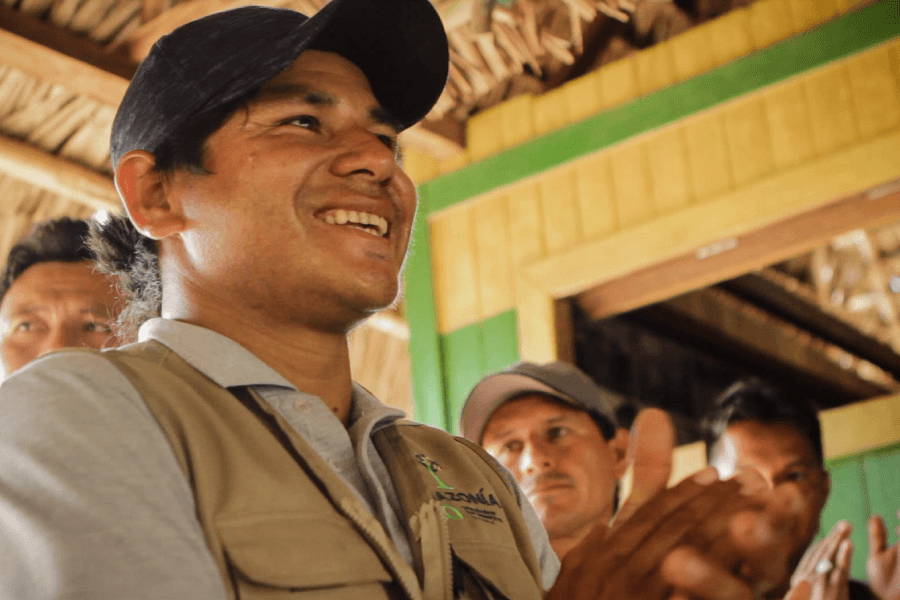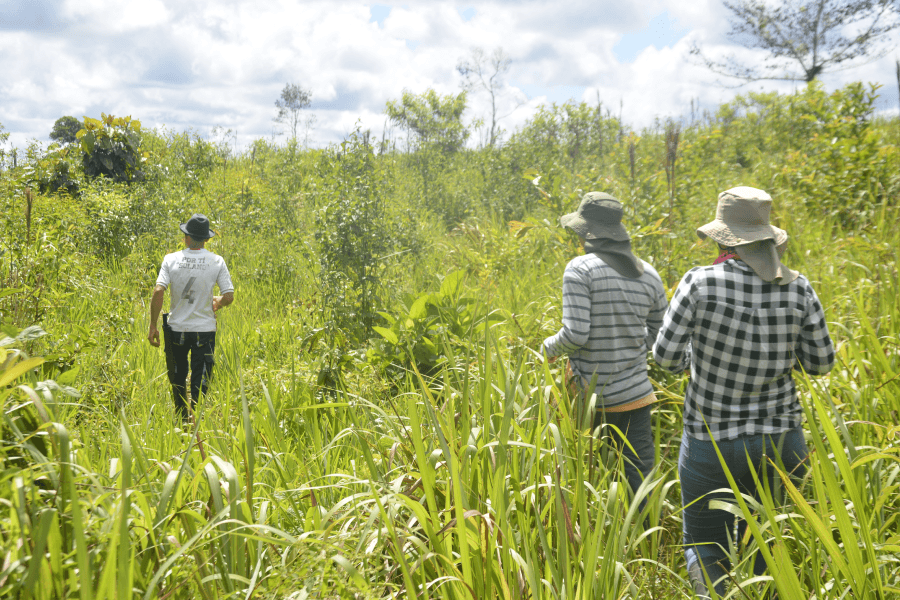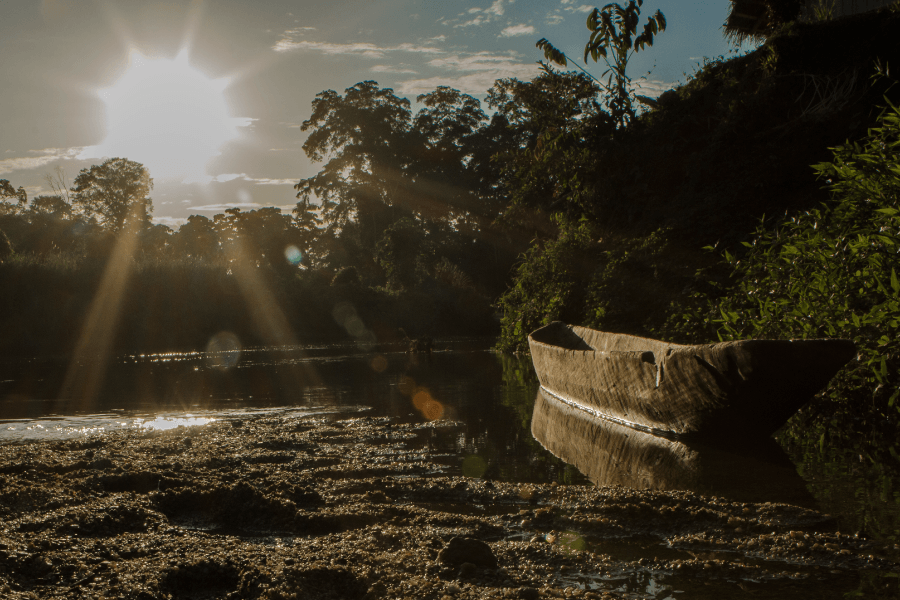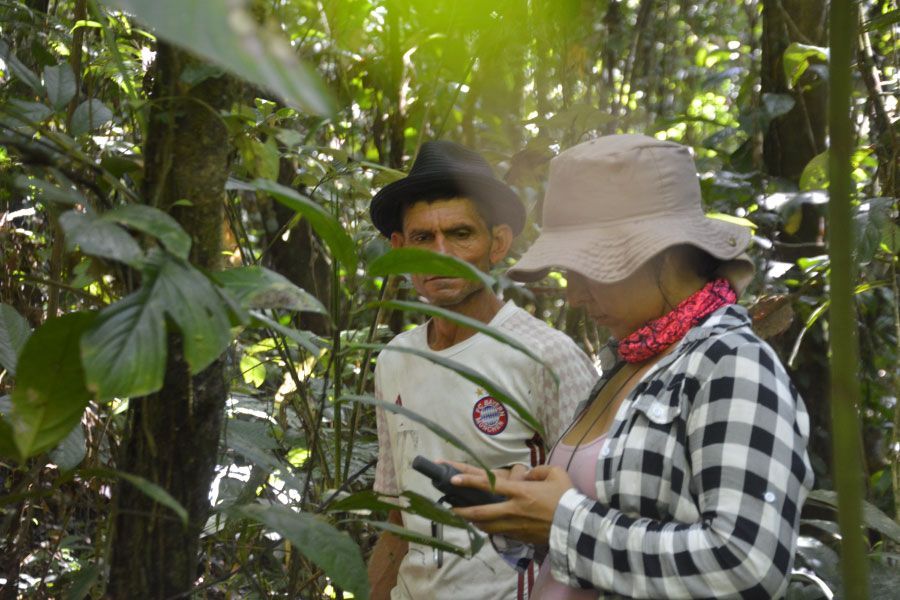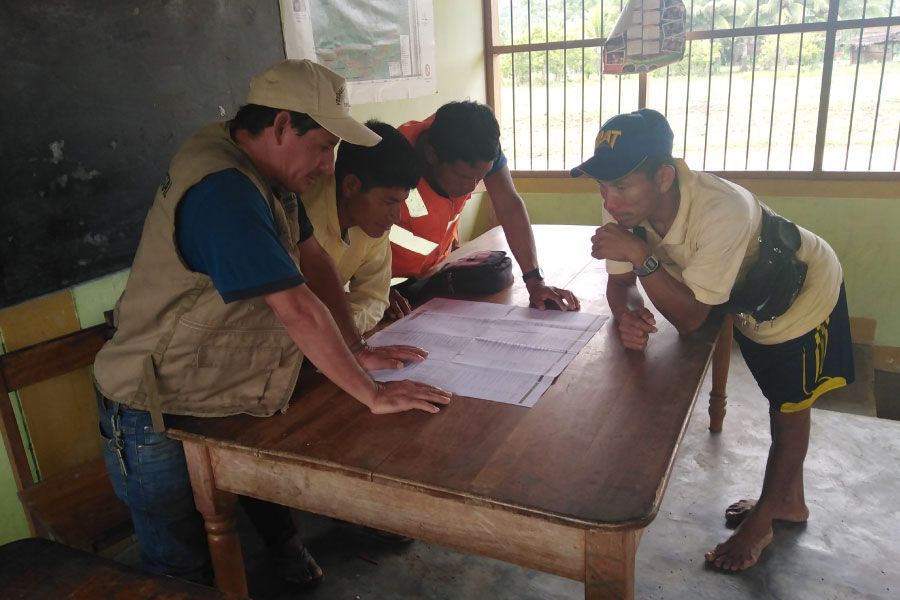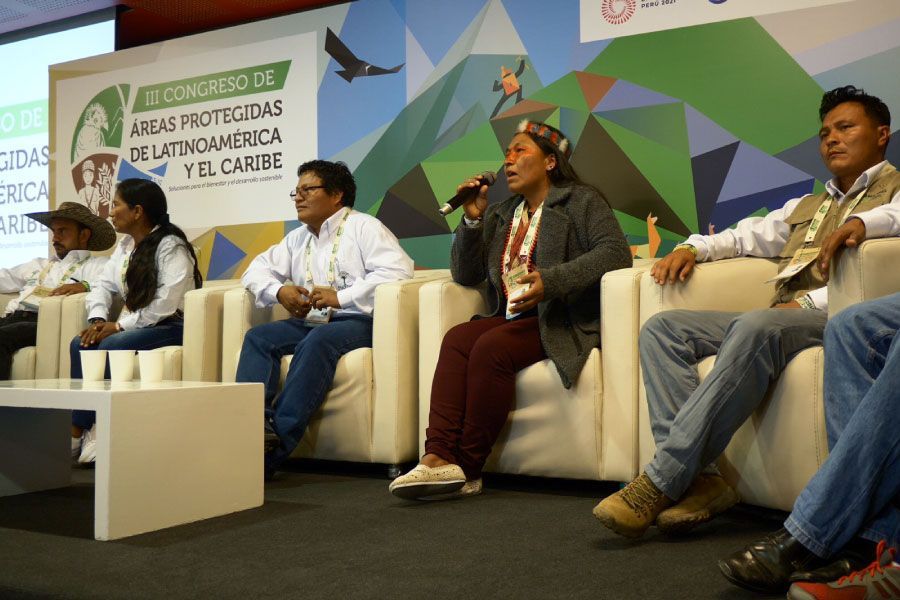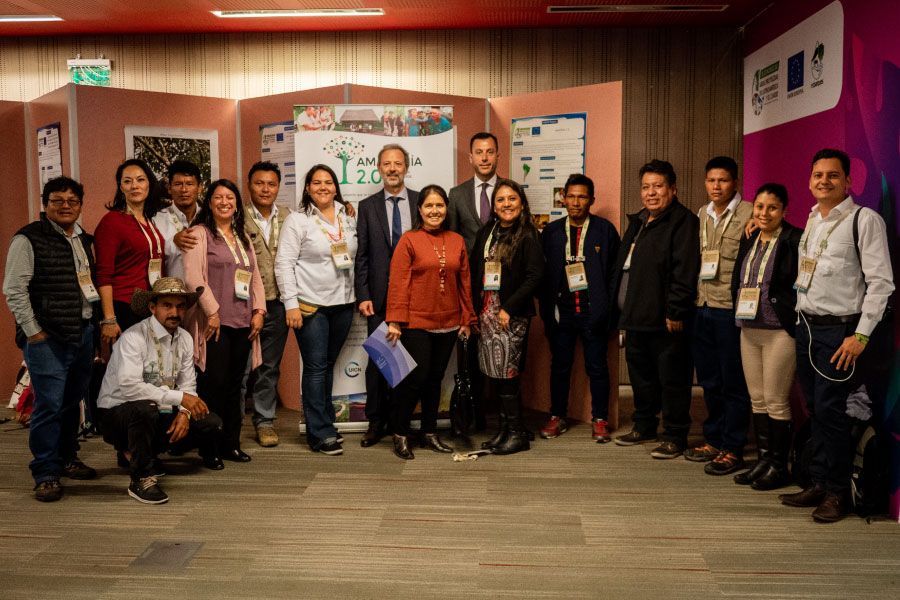Amazonia 2.0
Amazonia 2.0 is a project funded by the European Union, coordinated by IUCN-South and executed by a consortium of trained organizations in Brazil, Colombia, Ecuador, Guyana, Peru and Suriname, in a set of territories that cover more than 1.5 million of hectares in total.
The project was born in 2017, as a strategic alternative to fight the threats and pressures that are exerted on Amazonian forests, through the proper management of indigenous and campesino territories.
It’s an initiative that focuses on populations that “live in the forest and of the forest”, in a “bottom-up” work, that strengthens local capacities to create their own management models to prevent, address and mitigate damage, safeguarding natural heritage.
The Amazonia 2.0 intervention model has as its fundamental tool local oversight or monitoring, that allows indigenous or campesino communities to become a technical figure that ensures the sustainable management of their resources. The work of the local monitors, overseers or rangers, generates resonance in their communities, producing an impact on decision making in local, departmental or provincial and national authorities.
It’s precisely this incidence that allows a reduction of threats and pressures through the monitoring and attention of cases; and also, territorial management with a local and intercultural perspective, to achieve the purpose of conservation, restoration and sustainable use of natural resources.
General Objective
-
 Specific objective 1
Specific objective 1
-
 Specific objective 2
Specific objective 2
EXPERIENCES
-
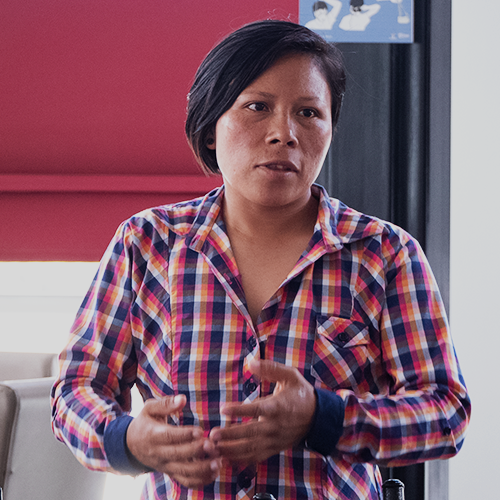
Aurelia Ahua - Ecuador
Aurelia Ahua lives in the Waorani Territory, east of Quito, under constant threat. For her, as for the rest of the members of her community of Akaro, indiscriminate logging, illegal hunting, oil extraction and colonial settlements have become everyday problems.
The Waorani are the most recently contacted indigenous people in Ecuador. Since encountering a group of American missionaries in 1958, they have experienced a difficult and sometimes abrupt insertion into the Western world. Faced with this panorama, some Waorani clans decided to go into the jungle to continue their life as before.
Aurelia is a Waorani woman who left her community at the age of eighteen to continue her studies and quickly found herself immersed in the dynamics of a world she did not know: "My sister lived in the city and I finished high school there. It wasn't easy, for a girl who grew up in the jungle, to leave the family and abandon all that I grew up with."
When she finished high school, she began to frequent the Waorani leadership office in Shell - a town in Pastaza province - where leaders met to discuss the issue of territoriality. "I became interested in the leadership workshops they organized and began to travel, back to my territory. I loved that, I was traveling with them, but I wasn't part of the team. Until one day I was selected to work on the project and that's how my life went on."
For the past three years, she has been collaborating with the Amazonia 2.0 project, an initiative that is being developed in six countries in the Amazon region. "Thinking well about my territory, it is the only one I have, it is the only one where there are Waorani people, with their life, with their nature. If we do not act, if we do not have support, what will happen after ten or twenty years? What will happen? That's what I think, that's what we have to act on together with the organizations," says Aurelia, who grew up in the middle of a territory that suffers and faces pressures from different fronts. Therefore, she decided to take action and join the Amazonia 2.0 project as a technical monitor as an alternative to fight against these threats to the Amazon forests, from the proper management of indigenous territories. "While I was studying, I was always dreaming that I wanted to be someone and I wanted to work for my people. I think I am on the right path, a good start for my life."
Aurelia works as a monitoring technician or Neaarani (as it is said in her language, Waotededo). That is, she registers and manages threats in her territory through applications and an online platform. In this way, other Waorani technicians specialized in the subject can analyze the data, provide a solution and, if necessary, transmit it to the state authorities.
Thanks to technology, Waorani complaints now reach the decision-making institution eight days faster than before. However, the official recognition of the State through its ministries is still lacking. "The project will remain with us until it is finished, but we, who work and live in the territory, have to act with the organizations and technology, so that they do not destroy the forest," says Aurelia, one of the guardians of the Waorani Territory.A young Waorani woman in Ecuador commits herself to her territory and decides to enlist as a monitor in an initiative that seeks to defend the forests from external threats. Her struggle is also an example for the rest of her community in the Waorani Territory.
-
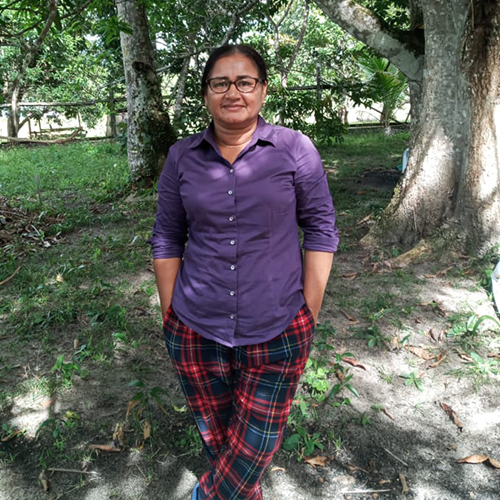
Sherry Ann Balkaran - Guyana
Mrs. Sherry Ann Balkaran is an Indigenous advocate from the predominately Patamuna community of Paramakatoi, Region 8. With extensive experience advocating for the rights of Indigenous Peoples, she currently serves as the Secretary of the North Pakaraima District Council as well as Vice-President of the Amerindian Peoples Association.
“I think environmental monitoring projects like the Amazonia 2.0 project benefits us here in the North Pakaraimas by helping our people be aware of what is really happening presently in the Region. I would very much like to see our youths be trained so that they can be dispersed into the different areas and monitor our environment so that that when they do so, they would be able to bring the information to the different villages and the different village councils so that they can be aware of what is happening and put systems in place to rectify or curb these things.”
"Environmental monitoring projects like Amazonia 2.0 benefit us here in the North Pakaraimas by helping our people be aware of what is really happening in the Region".
-
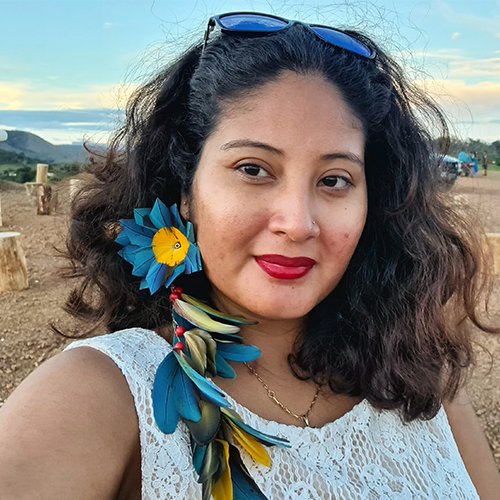
Mariah Lall - Guyana
Mariah has been working with the Amerindian Peoples Association for the past two years as the organisation’s Communication and Visibility Officer. Under Amazonia 2.0, she has worked closely with the Regional communications team in promoting the visibility of the project to the wider public.
“Working with IUCN on the Amazonia 2.0 project in the area of communications has been a great experience for me. The Regional team has been extremely supportive in ensuring we reach our communication goals particularly during a period plagued with uncertainties due to the on-going COVID-19 pandemic. With their continued guidance, I have improved my capabilities as a communications officer thus benefiting the APA and the many Indigenous communities that we work with.
Additionally, working on this project has allowed me to expand my knowledge on how our Indigenous Peoples in many parts of Guyana, including Region 8, continue to be devastated by the largely unregulated extractive industries.
It has also afforded me valuable networking opportunities with resource persons in these areas who continue to advocate for the change that is needed to ensure a better quality of life in these parts.”
“Working on this project has allowed me to expand my knowledge on how our Indigenous Peoples continue to be devastated by the largely unregulated extractive industries".
-
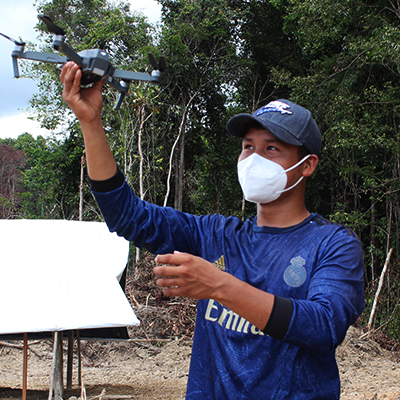
Kemal Robinson - Guyana
From the age of 16, Kemal Robinson (now 21) has been working with the Amerindian Peoples Association as a mapping apprentice.
As a Patamona youth from Kato Village in the Potaro- Siparuni Region, his introduction to this field of work came through an opportunity to work alongside other resource persons collecting critical information for the Region 8 Land Tenure Assessment (LTA).
The Region 8 LTA is the second in a series of APA research publications that highlight the land tenure situation of Indigenous Peoples in different regions of Guyana. It is supported by the Forest Peoples Programme and the Rainforest Foundation US through funding from NORAD and the Rainforest Fund.
From there, Kemal moved on to working on other projects with the APA that allowed him to expand his knowledge of the work required and the importance of mapping Indigenous lands as well as better understanding his own home territory. Overtime, Kemal also became one of several Indigenous youths trained in video production under the APA’s Youth-Led Media programme which was funded by NORAD applying the knowledge he gained as a mapper.
At present, Kemal is skilled in using GPS activated software to collect data and plot maps that can be used by communities or District Councils in advocacy-based campaigns.
“When we go in the field, we take pictures, videos and GPS points and plot them on a map. When someone is asking what’s going on there, we can show them this. And we also take names so that we can identify persons who are living and working in specific areas."
Kemal believes that issues affecting Indigenous Peoples in Guyana are often time not a priority for those in authority. However, this only motivates him to continue raising awareness on these issues through evidence-based advocacy.
“The environmental monitoring programme would be a very, good thing since this would allow us to gather evidence to show those who do not believe what’s going on the ground. With the environmental monitoring you take GPS points, you take videos and photos that you can give back to the community and show on a wider scale for them to see what is going on,” Kemal shared.
“They say Guyana is one of the most beautiful countries in the world but, it’s being destroyed, slowly but surely,” he added.
-
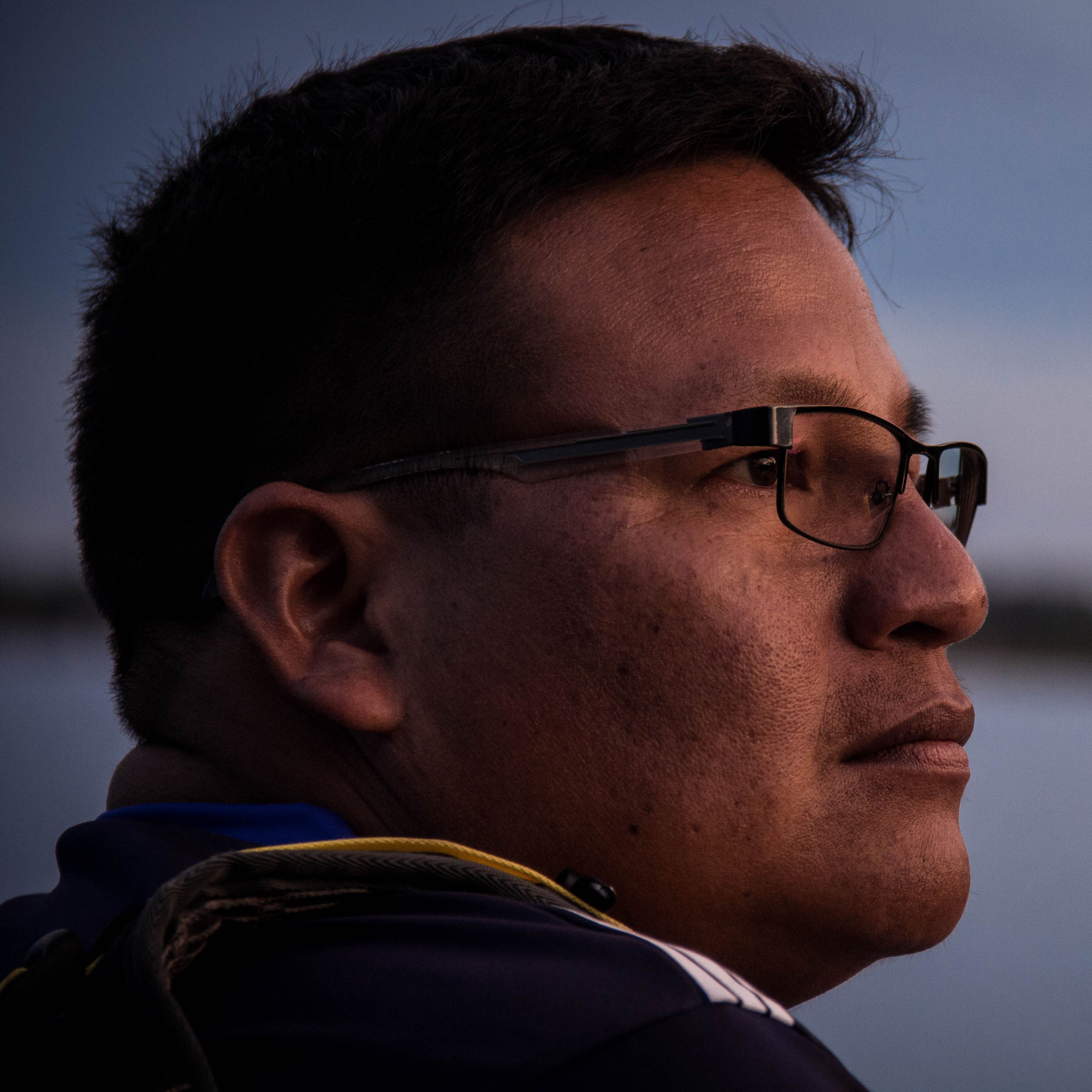
Gilberto Nenquimo - Ecuador
Since March 2020, Gilberto Nenquimo has been carrying out his duties as President of the Waorani Nationality of Ecuador (NAWE) with notable enthusiasm, seeking to strengthen the autonomy and well-being of the 67 communities that live in the three provinces that make up the Waorani territory.
The leader recognizes that one of the most important precedents for him to reach his role as president has been to participate in Amazonia 2.0, accepting the invitation of the Association of Waorani Women of the Ecuadorian Amazon (AMWAE) to be part of the Community Monitoring, implemented during the project. There, for three years, Gilberto managed to appropriate himself of the reality of his context and expand his capacities with the use of technological tools, to strengthen his efforts in the defense of his territory.
"When I was proposed to do monitoring and governance, I loved it. I had been working as one of the defenders of the territory, but Amazonia 2.0 took me further. Not only to be a technician, not only a leader, but to learn the dimensions of degradation and the future of the Waorani territory," says Gilberto.
The most common pressures faced by the communities have to do with the illegal trafficking of meat from endangered species; hunting; invasion of people from outside Waorani territory; and illegal logging. In response to this, community observers use technology to record the situation or irregularity, which is then forwarded to Gilberto, who in turn makes the complaint and sends it to the Ministry of the Environment (MAE), the institution responsible for verifying and following up on the cases. Thanks to technology, now the Waorani reports arrive 8 days faster than before, to the decision-making institution.
In addition to monitoring alerts, the Waorani leader describes as an influential factor for the success and acceptance of Amazonia 2.0, the possibility of promoting the sustainable development of Waorani families, respecting their autonomous decisions and their world view, through the installation of projects for bamboo, cacao, handicrafts and traditional medicine. According to Gilberto, he is honored to recognize that this is the first time that a project in the territory is directed by the Waorani themselves, since they have been from the beginning as technicians, monitors and coordinators of this project.
In spite of the lack of speed with which the Ministry of the Environment has followed up on the cases, the Waorani leader speaks of the need to strengthen dialogue and understanding of the principles of interculturality, so that these processes are increasingly effective. Likewise, he mentions the lines along which he will orient his work from this year: Territory, Social Development, Economy and Food Security.
Gilberto considers that all the projects developed in the Amazon should seek unity and integrality. Likewise, he emphasizes the importance of motivating the Amazon communities to appropriate the natural resources so that no one can take them away "because it is these resources that allow us to live in community, our forest is our home”.
"When I was proposed to do monitoring and governance, I loved it. I had been working as one of the defenders of the territory, but Amazonia 2.0 took me further."
-
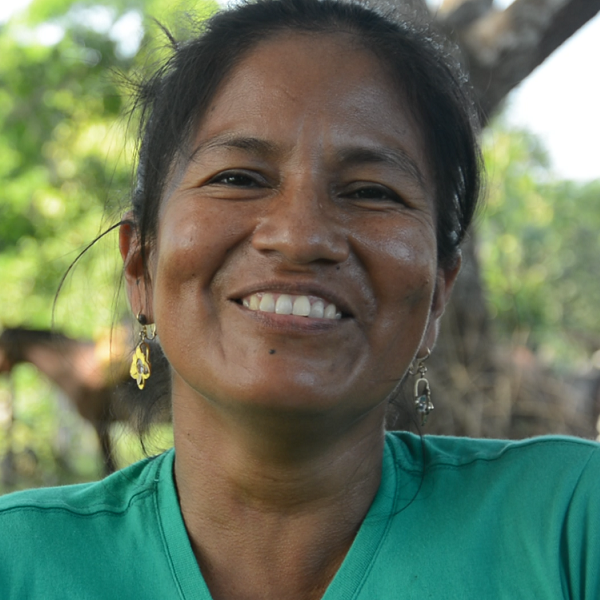
Fanny Jael Jamioy - Colombia
There are 12 environmental monitors, who look after the social and environmental well-being of their territory. Three of them are indigenous people, belonging to the Inga Indigenous Reservation of Niñeras, and nine are campesinos (rural country people), inhabitants of the Mononguete nucleus in Solano (Caquetá), in the Amazon region of Colombia.
Fanny Jael Jamioy, a leader who deserves credit for her work as an environmental monitor, firmly believes that Amazonia 2.0, since its inception in 2017, "has been the possibility to dialogue, build and generate agreements that allow us to survive over time and give a harmonious management to the territory, taking into account the needs and world views of both the 21 families of the reservation that live in the lower part of the Niñeras stream, and the 157 campesino families, grouped in 8 communities, in the middle and upper part.
The possibility of living in peace
According to Fanny, the value of the territory is the possibility of living peacefully; of having the chagra (sowing) and the forest as sources of life; of living with others and with nature. Since the declaration of the Niñeras reservation in 1988, 93% of the forest in this area has been conserved, resisting not only the presence of armed groups, but also the pressure to transform the landscape that the surrounding villages have suffered as a result of cattle ranching or the cultivation of coca leaf.
The community agreements that have been created are related to the care of the water in the Niñeras stream. For both communities this is their most precious asset. "We did nothing to preserve the water if they continued to deforest and contaminate," says the monitor, referring to the positive changes in the relationship between her community and the campesinos. In addition to carrying out community monitoring of the territory, they have made a joint effort to clean up and restore the springs of the stream, to open up to the exchange of knowledge and to forge ties of cooperation.
For Fanny, an Inga woman from the Indigenous Reservation of Niñeras, her motivation is to teach her children and her community the value of caring for nature.
-
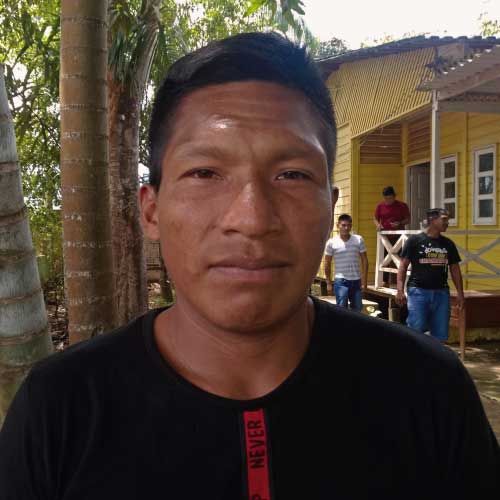
Francildo Matias - Brazil
Francildo is a young leader of the Manchineri people. He lives in the Mamoadate Indigenous Territory, in the town of Peri, located in the state of Acre, Brazil. In addition to training as an Indigenous Agroforestry Agent, the proactivity of Francildo and his ease of communication and use of new technologies, made his community choose him as a monitor for the Amazonia 2.0 project.
In October 2019, it was the first time that Francildo left Acre and the country to participate in the III Congress of Protected Areas of Latin America and the Caribbean (CAPLAC), as part of the first training sessions around the project, in Lima, Peru. There he exchanged experiences with other Peruvian, Colombian and fellow monitors such as the Waorani, he met with the Ambassador of the European Union and spoke in one of the panels about the reality of his territory and his people. In addition, he made friends, like the indigenous rap singer Eler Gabriel Rojas from Peru, he fell in love with the sea, seen for the very first time and, curiously, wanted to know what beasts were there.
“Francildo is a young leader of the Manchineri people. He lives in the Mamoadate Indigenous Territory, in the town of Peri, located in the state of Acre, Brazil."
-
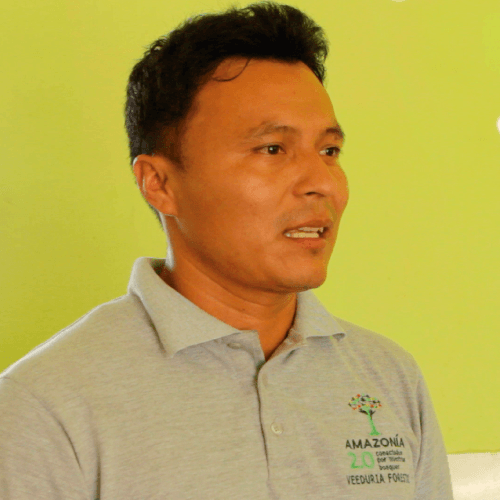
Rogelio Casique Coronado - Peru
Meet Rogelio, Indigenous Forest Monitor of CORPIAA (Regional Coordinator of the Indigenous Peoples of Atalaya), AIDESEP base, Peru. Here is his experience as a monitor:
“I completed my technical studies in the specialty of agriculture in Atalaya 10 years ago, but far from dedicating myself to agriculture I dedicated myself to forestry. When I was offered the opportunity to be a Forest Monitor, I had no complete idea of what it was, I sensed that it was like being a forest watcher for the communities, and when I started in the position, I began to discover that it was something else, that it was not only being a vigilant but a manager, such as a doctor for the patient of the forests in the communities, who is dedicated to providing technical assistance for the management of the territory and the forest, which wasn’t only to take advantage of the wood, but to represent the communities in meetings, workshops, manage information in an orderly manner, train people in communities, advise leaders, as their technical right arm.
Thanks to the constant teaching and support of the A2.0 project professionals, I have been able to improve my skills, order my knowledge, apply my skills. I think that being a monitor is a profession that you form in practice, being a monitor is being in the field of events, in the day-to-day life of the communities, where the institutions don’t always arrive, you listen to the demands of the people, you see the people's needs, you enjoy the forest, but you also worry about its destruction.
I believe that it’s necessary to continue betting on the “veedurías” (monitoring), to train more young people, to train them in the field with equipment, in computer management, writing, to look for ways to find mechanisms that compensate for their dedication, so that the communities can feel more their contribution, if the Monitors are consolidated I believe that governance in communities and organizations will improve even more, therefore we will ensure that forests are always there, but if we don’t support or strengthen the monitors, the risks of community poverty, corruption and destruction of forests will increase. ”
“Thanks to the constant teaching and support of the A2.0 project professionals, I have been able to improve my skills, order my knowledge, apply my skills.”
-
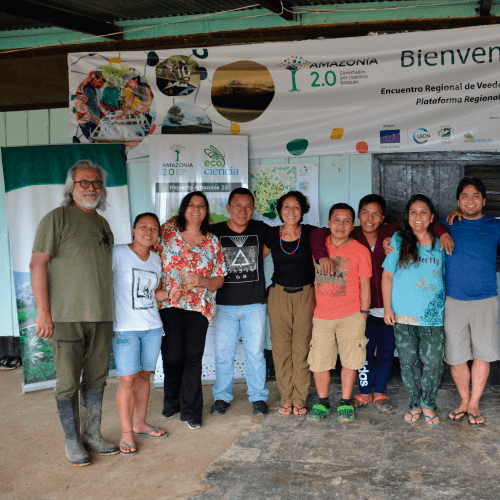
Monitoring House - Colombia
The Communal House of the ProDesarrollo Association located in the Miravalle village (Solano, Caquetá, Colombia), was adapted as a Community Monitoring Center in 2018 by environmental promoters articulated in Amazon 2.0.
Without a doubt, this site has been key in strengthening territorial governance, with positive results in the search for alternatives that: prevent returning to the most violent times of a municipality that has been affected by the armed conflict; contribute to the well-being of communities, and contribute to the protection of biodiversity.
Until three years ago the village of Miravalle was desolate. However, since the involvement of environmental promoters and their work, the environment has a different air. The families that had abandoned their homes, returned and the Monitoring House became the epicenter of meeting between people and the leaders of the different paths of the Mononguete nucleus. In the House take place training sessions, gatherings, meetings and decisions are made on socio-environmental issues.
This change in the dynamics has strengthened community relations and has allowed farmers from the Mononguete nucleus, and indigenous people of the Inga Reservation of Niñeras to collectively design actions for the sustainability of natural resources and in general, for the construction of a territory with better possibilities for all.
“Until three years ago the village of Miravalle was desolate. However, since the involvement of environmental promoters and their work, the environment has a different air.”
-
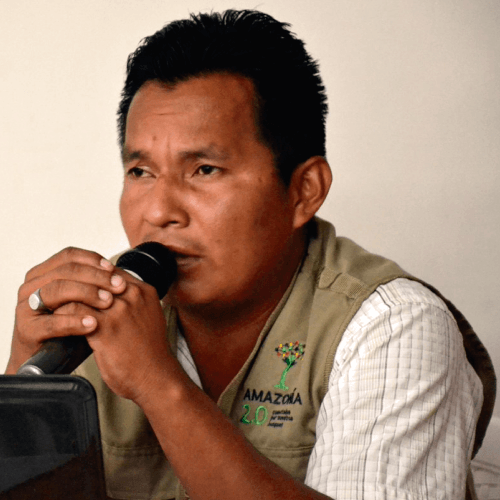
Eslin Torres - Peru
Eslin is one of the Forest Monitors of the Amazonia 2.0 team in Peru. In his words, he explains how his participation in the A2.0 project has been:
"Being a monitor is one of the challenges I have as a person. I have contributed to the indigenous communities as an articulator and nexus of a backbone and, despite the little presence of the State, I have tried to establish a link with the forestry authorities.
Monitoring has allowed me to strengthen training and implement the oversight of territories and forests, thus achieving the insertion of the monitoring units as technical instances for decision making related to forestry and wildlife activities.
Previously, disorganization due to lack of knowledge of the forestry law meant non-compliance with the rules, resulting in fines. Now that has changed, and thanks to that, so has the reality of indigenous peoples, improving the management of forest resources, making profits and learning from mistakes.
I had no major difficulty in exercising my duties as overseer because they were merged with my daily activities. I would do it again and again. And if I had to give advice to a person who wants to be a veedor, I would tell them to pay attention, empower themselves, train themselves, ask questions and give it their all.
Once the project is finished I will continue to support through my work as I have been doing to this day."
"Now that has changed, and thanks to that, so has the reality of the indigenous peoples, improving the management of forest resources, making profits and learning from mistakes."
ACHIEVEMENTS
-
57
Indigenous or campesino monitors.
-
2107
Participants in 191 workshops.
-
1864
Monitoring reports.
-
21
Agreements with organizations, communities and governments.
-
05
Regional studies.
-
Regional platform designed in a participatory manner and in operation, made up of social and technological components.
-
13 internal virtual sessions with A2.0 partners and 4 regional webinars for a wide audience as part of the Cross-learning Strategy.
-
Exchanges of monitoring experiences in Atalaya Peru, and in the province of Caquetá in Colombia.
LESSONS LEARNED
Systematization of Lesson Learned
© 2020 Amazonia 2.0. All rights reserved.
Web paged developed by Nido Interactive.
